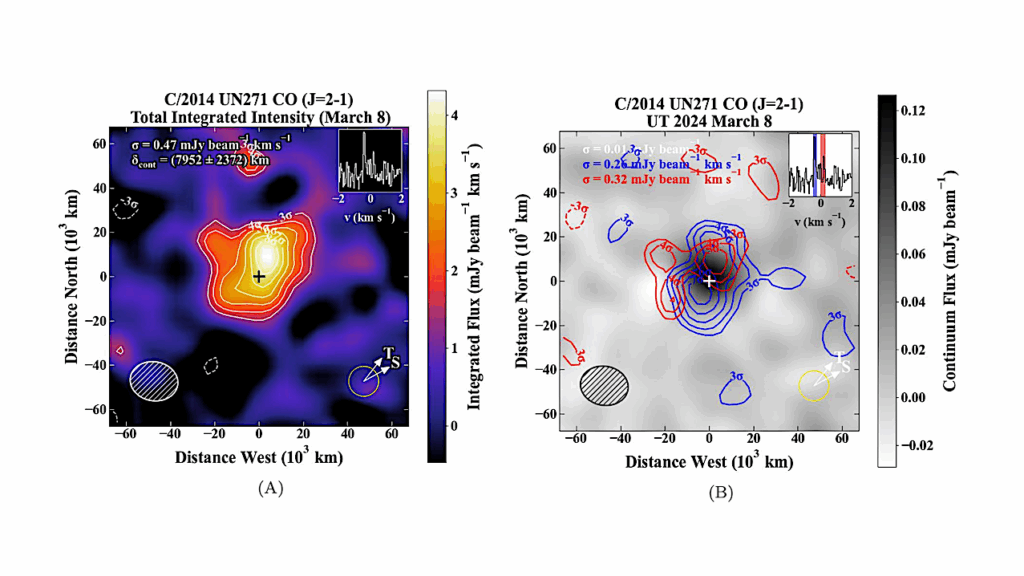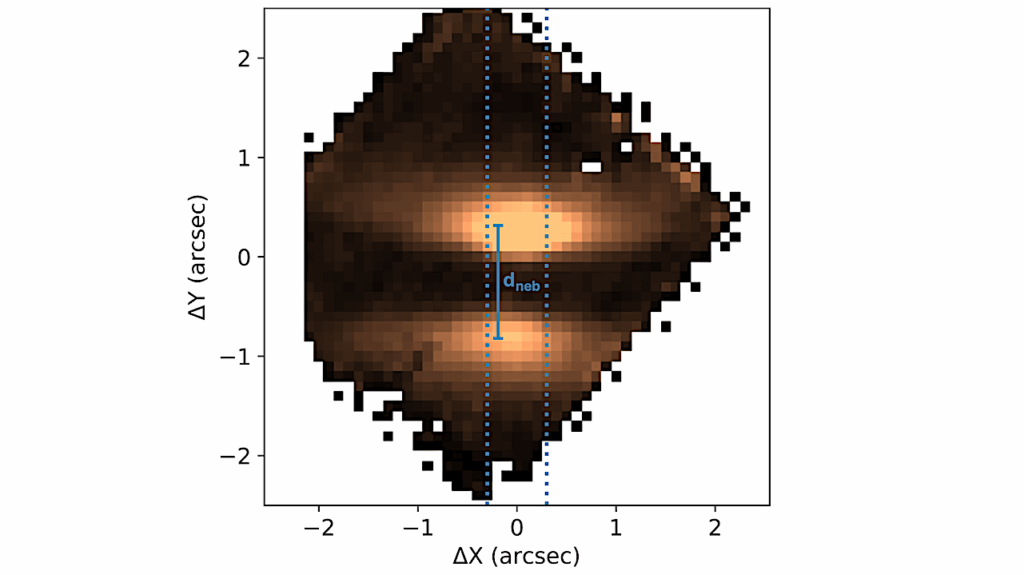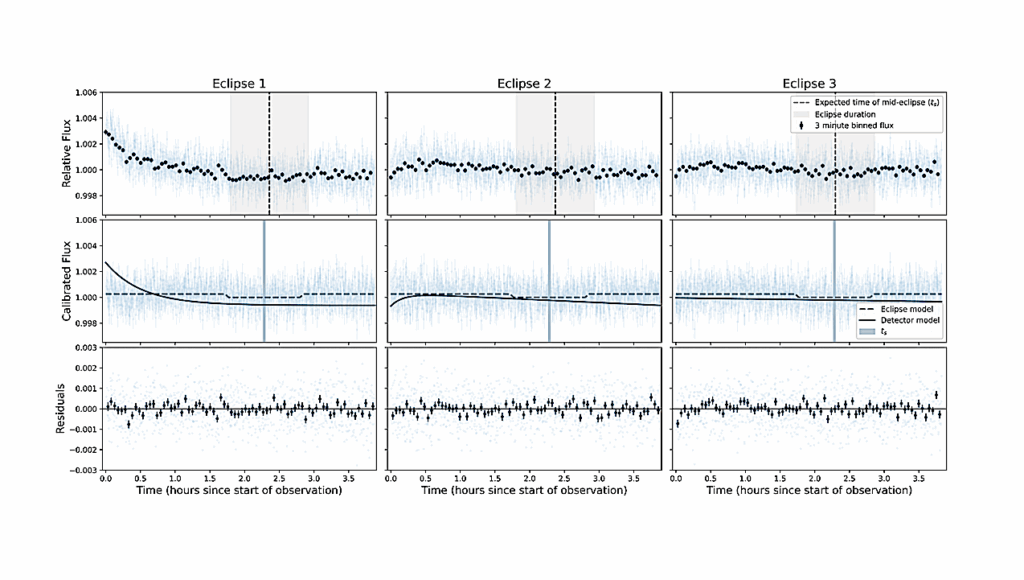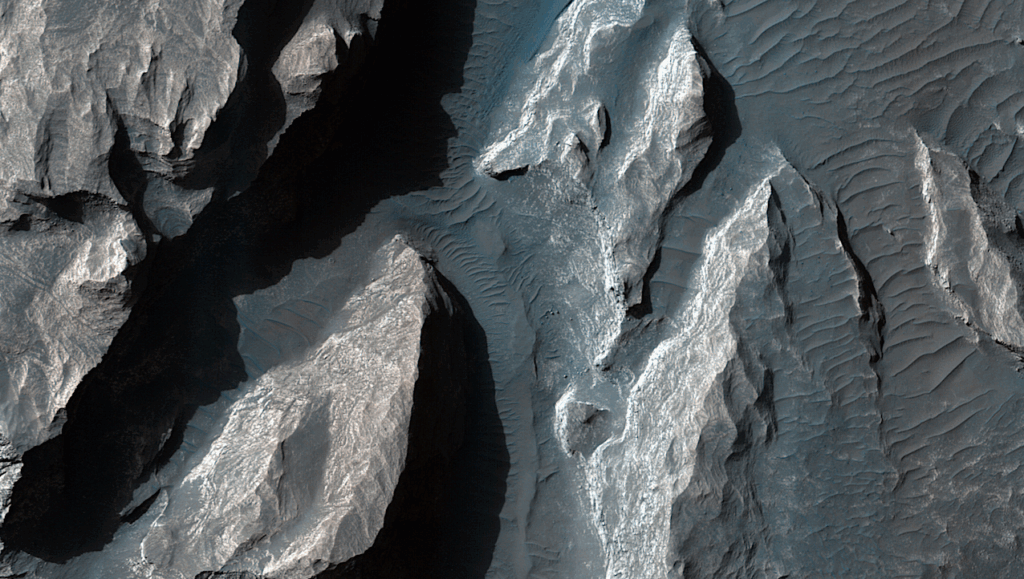Thermal and Magnetic Evolution Of An Earth-like Planet With A Basal Magma Ocean

Earth’s geodynamo has operated for over 3.5 billion years. The magnetic field is currently powered by thermocompositional convection in the outer core, which involves the release of light elements and latent heat as the inner core solidifies.
However, since the inner core nucleated no more than 1.5 billion years ago, the early dynamo could not rely on these buoyancy sources. Given recent estimates of the thermal conductivity of the outer core, an alternative mechanism may be required to sustain the geodynamo prior to nucleation of the inner core. One possibility is a silicate dynamo operating in a long-lived basal magma ocean.
Here, we investigate the structural, thermal, buoyancy, and magnetic evolution of an Earth-like terrestrial planet. Using modern equations of state and melting curves, we include a time-dependent parameterization of the compositional evolution of an iron-rich basal magma ocean. We combine an internal structure integration of the planet with energy budgets in a coupled core, basal magma ocean, and mantle system.
We determine the thermocompositional convective stability of the core and the basal magma ocean, and assess their respective dynamo activity using entropy budgets and magnetic Reynolds numbers.
Our conservative nominal model predicts a transient basal magma ocean dynamo followed by a core dynamo after 1 billion years. The model is sensitive to several parameters, including the initial temperature of the core-mantle boundary, the parameterization of mantle convection, the composition of the basal magma ocean, the radiogenic content of the planet, as well as convective velocity and magnetic scaling laws.
We use the nominal model to constrain the range of basal magma ocean electrical conductivity and core thermal conductivity that sustain a dynamo.
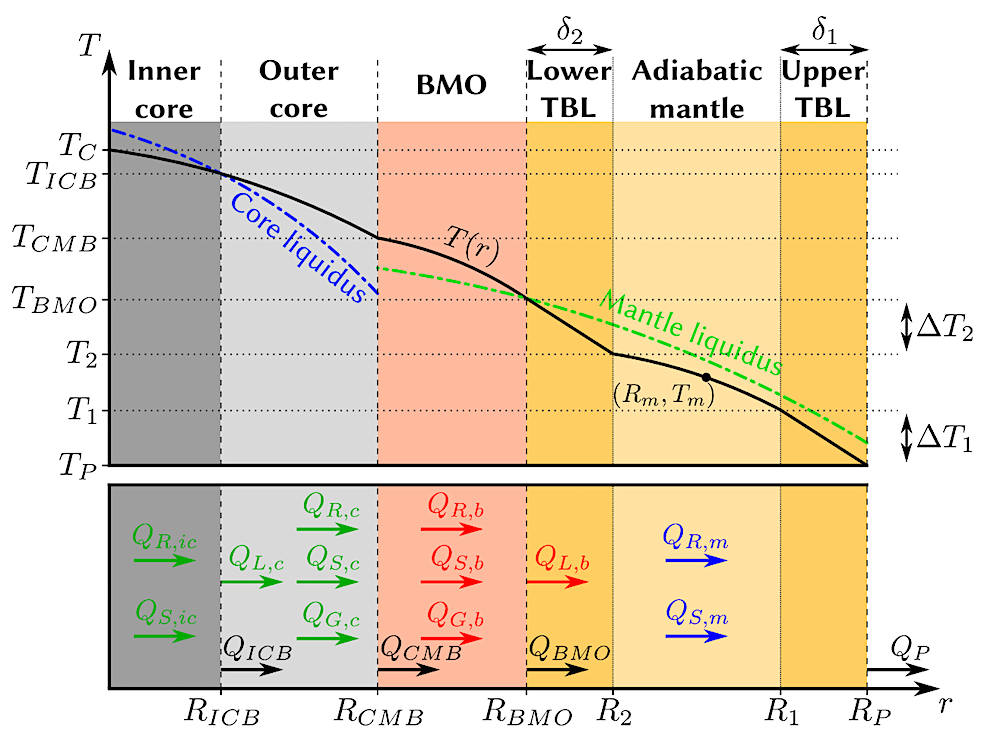
Definition of the layers and interfaces that can constitute the internal structure of the planet, i.e. a solid mantle, a liquid BMO, a liquid outer core and a solid inner core. The mantle is divided into an adiabatic section located between two thermal boundary layers (TBL). The extents of the BMO and the outer core are determined by the intersection of the adiabatic temperature profile anchored at the CMB and the appropriate liquidus. The arrows depict the heat flows 𝑄 involved in the energy budget. The radiogenic heating, secular cooling, gravitational energy and latent heat terms are denoted with the subscripts 𝑅, 𝑆, 𝐺 and 𝐿. — astro-ph.E
Victor Lherm, Miki Nakajima, Eric G. Blackman
Subjects: Earth and Planetary Astrophysics (astro-ph.EP); Geophysics (physics.geo-ph)
Cite as: arXiv:2409.06031 [astro-ph.EP] (or arXiv:2409.06031v1 [astro-ph.EP] for this version)
https://doi.org/10.48550/arXiv.2409.06031
Focus to learn more
Submission history
From: Victor Lherm
[v1] Mon, 9 Sep 2024 19:43:27 UTC (1,953 KB)
https://arxiv.org/abs/2409.06031
Astrobiology


